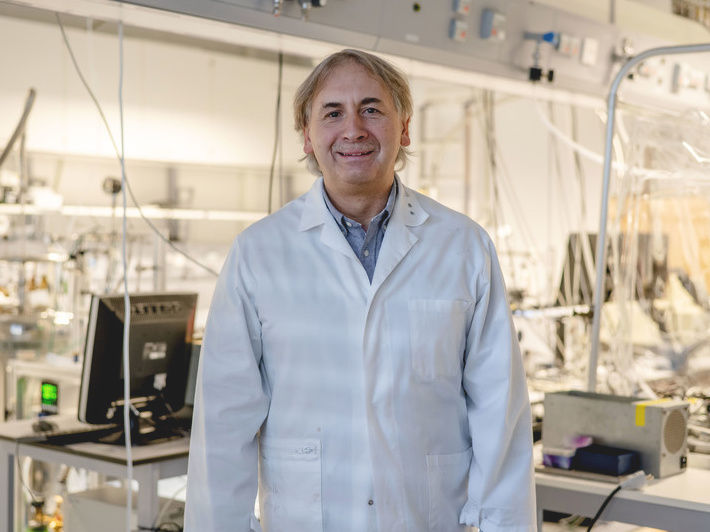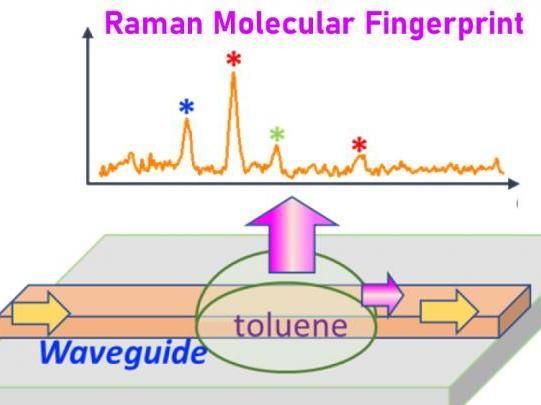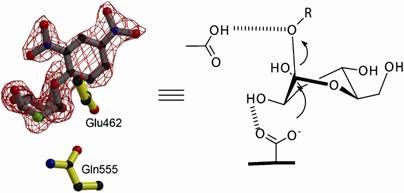A poison helps to understand H2-producing biocatalysts
The toxic cyanide molecule attacks H2-generating enzymes, but at the same time provides new insights into catalysis
In nature, enzymes termed hydrogenases are capable of producing molecular hydrogen (H2). Special types of these biocatalysts, so-called [FeFe]-hydrogenases, are extremely efficient and therefore of interest for biobased hydrogen production. Although scientists have learned a lot about how these enzymes work, many details remain to be completely understood. A research team of the Photobiotechnology group at Ruhr University Bochum, Germany, headed by Dr. Jifu Duan and Professor Thomas Happe succeeded in filling a scientific gap. The researchers showed that external cyanide binds to the [FeFe] hydrogenases and inhibits hydrogen formation. In the process, they detected a structural change in the proton transport pathway, which helps to understand the coupling of electron and proton transport. They reported their findings in the journal “Angewandte Chemie” of 4 December 2022.

Thomas Happe is researching biocatalysts that can produce hydrogen in an environmentally friendly way.
© RUB, Marquard
A sophisticated internal catalyst
To generate H2, these biocatalysts transfer electrons to protons, employing a sophisticated structure as internal catalyst. This so-called H-cluster contains electronically active iron ions that are bound to what most people know as toxins: carbon monoxide and cyanide. However, although internal carbon monoxide and cyanide are crucial for the high activity of hydrogenases, additional external carbon monoxide binds to the H-cluster and prevents its H2 production. “Interestingly, cyanide is also a well-known inhibitor of iron-containing biocatalysts,” says Jifu Duan. “And yet, its effect on [FeFe]-hydrogenases has hardly been analysed before.”
The Bochum-based research team closed this scientific gap. The researchers showed that external cyanide binds to and inhibits [FeFe]-hydrogenases. In collaboration with Professor Eckhard Hofmann, head of the protein crystallography group at RUB, the team obtained the structure of H2-producing biocatalysts to which external cyanide was bound. “The high-resolution structure in combination with spectroscopic analyses tells us that the external cyanide directly binds to the H-cluster, similar to other inhibitors studied so far,” says Jifu Duan. “This explains why the hydrogenase is inactive after cyanide treatment.”
Coincidental capture of a transient state
When the researchers took a detailed look into the structure of the cyanide-poisoned hydrogenase, they found a surprise. They observed structural changes in the proton transport pathway that is required to guide the protons that will become H2 to the H-cluster. “This conformation has been suggested to be vital for efficient proton shuttling, but it had never been observed structurally. Coincidently, the cyanide binding helped us to capture such a transient state”, says Jifu Duan. “These findings are important for researchers to understand the coupling of electron and proton transport which is not only relevant for H2-generating enzymes, but many additional biocatalysts,” concludes Thomas Happe.
Original publication
Other news from the department science

Get the chemical industry in your inbox
By submitting this form you agree that LUMITOS AG will send you the newsletter(s) selected above by email. Your data will not be passed on to third parties. Your data will be stored and processed in accordance with our data protection regulations. LUMITOS may contact you by email for the purpose of advertising or market and opinion surveys. You can revoke your consent at any time without giving reasons to LUMITOS AG, Ernst-Augustin-Str. 2, 12489 Berlin, Germany or by e-mail at revoke@lumitos.com with effect for the future. In addition, each email contains a link to unsubscribe from the corresponding newsletter.
Most read news
More news from our other portals
Last viewed contents
ALTANA acquires formulated resins business from Solvay - Will be incorporated into the ELANTAS Electrical Insulation division
Evonik sells its US Jayhawk site - Company continues to intensify focus on high-margin specialty chemicals businesses
Solvay projects 35 percent capacity increase of sulfone polymer production over the next five years
Chiral Quest announces opening of new operations facility - In the Princeton/NJ area Chiral Quest intends to enlarge production of catalysts and larger scale chiral phosphines
Covestro continues production at Tarragona site - Investment of around EUR 200 million
Study finds flame retardant exposure higher in infants than adults

Styrolution Group GmbH - Frankfurt am Main, Germany

Researchers dramatically downsize technology for fingerprinting drugs and other chemicals - Tiny photonic chip could fit comfortably within the tip of a finger


























































